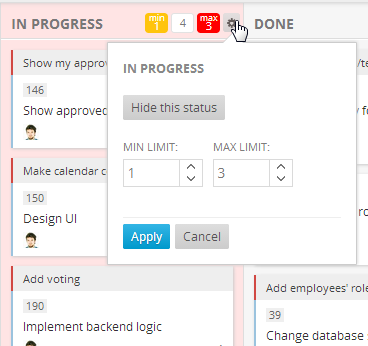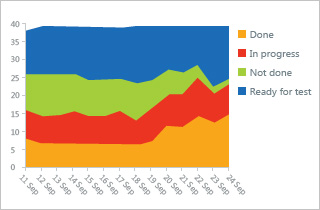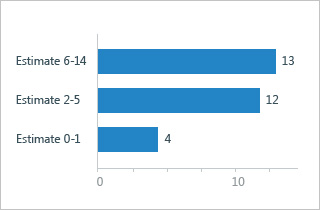Kanban is a method for developing software products and processes with an emphasis on just-in-time delivery while not overloading the software developers. In this approach, the process, from definition of a task to its delivery to the customer, is displayed for participants to see and developers pull work from a queue. The Kanban principles has roots in Lean manufacturing and can be effectively applied to software development, DevOps, IT Operations, and many other processes. Kanban has a few core principles: The most important principle of any successful system is to visualize the flow so you can start solving the bottlenecks. In TeamPulse you can have Kanban Board that look like: If the default statuses of you project are not enough you can create your own flow with defining custom states and transitions. The Work In Progress (WIP) limit is the essential principle in Kanban. It provides a predictable cycle time and show the bottlenecks in the development flow.  Configuring the WIP limits in TeamPulse is very easy. Just click on the gear icon in the column header and set the min and max limits: The flow of work through each state should be monitored, measured and reported. By actively managing flow you can identify the bottlenecks in your process. In TeamPulse you can use the Status History Report. This flow chart reveal bottlenecks on your team when there is an accumulation of stories in one state. The Estimate vs. Cycle Time report can help you to understand how much time a story stays in active development and you can correlate the actual story estimate with the cycle time.Kanban
FAQ: Kanban
What is Kanban? How to reduce the amount of not finished work?
How do I visualize the kanban flow with a board?

How do I setup work in progress limits (WIP)?

How do I manage the flow? How to identify bottlenecks?

How much time an item is developed?

